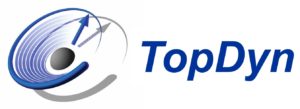

Seminar über die Physik der kondensierten Materie (SFB/TRR173 Spin+X und SFB/TR288 Kolloquium, TopDyn-Seminar)
June 6, 2019 at
2 p.m.
in
MAINZ Seminarraum, Staudinger Weg 9, Raum 03-122
Univ-Prof. Dr. Jure Demsar
Univ.-Prof. Dr. Hans-Joachim Elmers
Univ.-Prof. Dr. Mathias Kläui
Univ.-Prof. Dr. Thomas Palberg
Strongly Correlated Materials Investigated by Complementary Time Domain Techniques
Laurenz Rettig (Fritz Haber Institute of the Max Planck Society, Berlin)
Correlated materials are characterized by a variety of couplings between the elementary degrees of freedom, leading to novel ground states with broken symmetries and often intriguing properties. Yet the quantitative determination of those couplings, and their relevance for the formation of broken symmetry ground states and phase transitions remains a major challenge. In particular, in thermal equilibrium the various interactions are present simultaneously in a system, making it difficult to separate them due to their similar energy scale. Studies of those interactions in the time domain in a non-equilibrium system created after ultrafast optical excitation promise a way to separate such contributions by their intrinsically different dynamics. Such an approach, however, is often hindered by the unspecific nature of the employed probes and thus frequently limited to a qualitative discussion of time constants.
These limitations can be overcome by using quantitative and complementary time-resolved spectroscopies, which directly address the dynamics of specific degrees of freedom on their individual time scales, in order to determine the couplings between those degrees of freedom and their relevance for a phase transition from their temporal evolution (Fig. 1). In particular, combining femtosecond time- and angle-resolved photoemission spectroscopy (trARPES) and time-resolved x-ray diffraction (trXRD) techniques allows us to follow the ultrafast dynamics of electronic, structural and magnetic degrees of freedom and their orderings individually, yielding direct access to the coupling of the electronic, phononic and spin systems.
In my talk, I will discuss these concepts by means of several model systems for correlated materials such as charge- density wave materials or magnetically ordered systems.